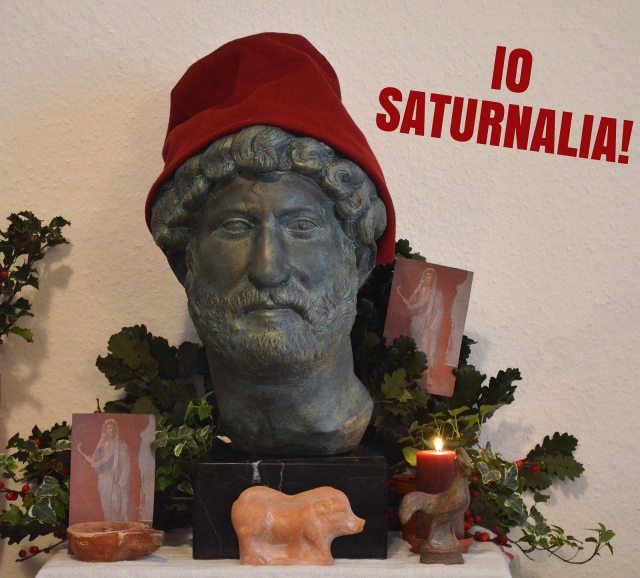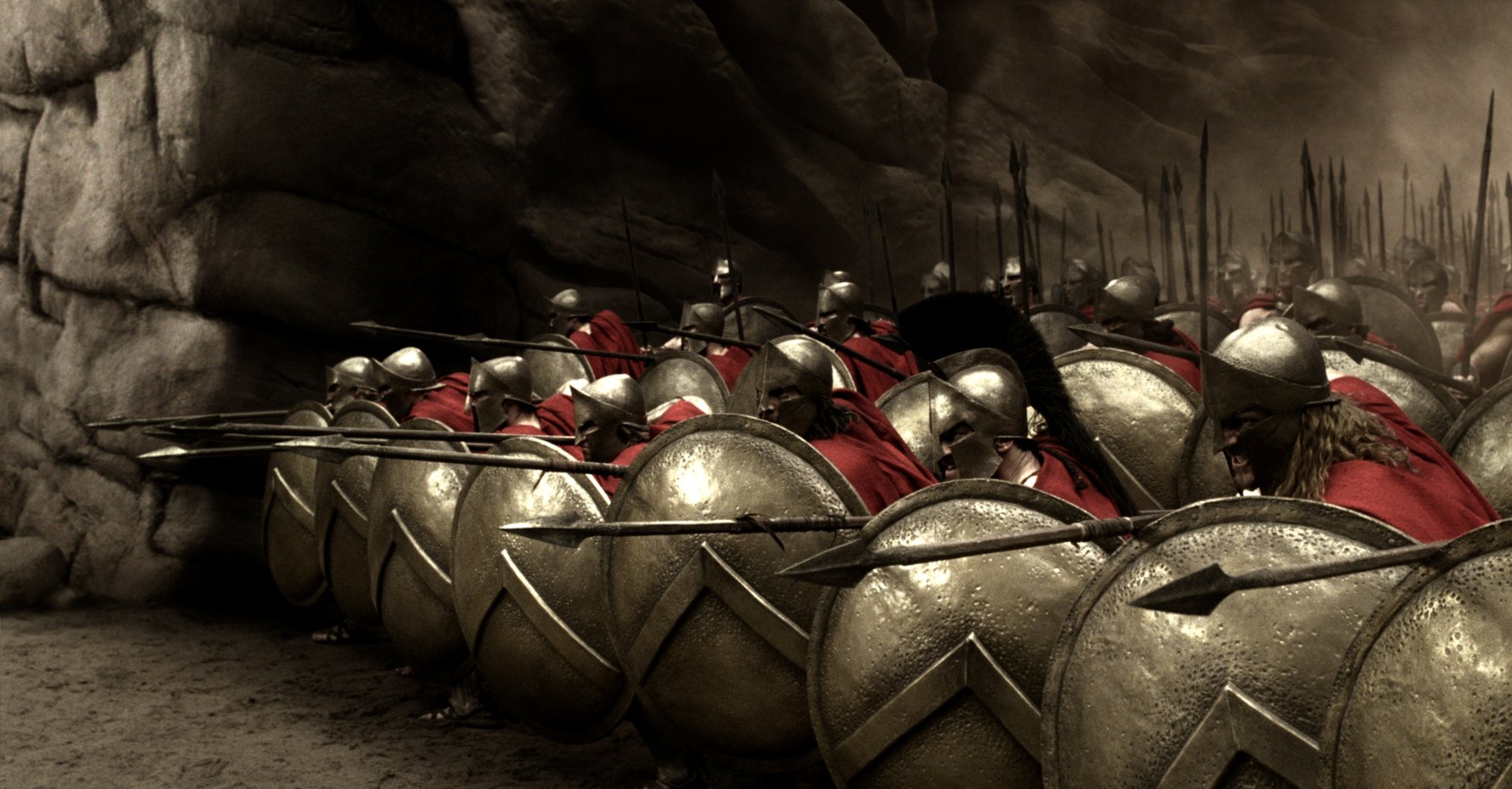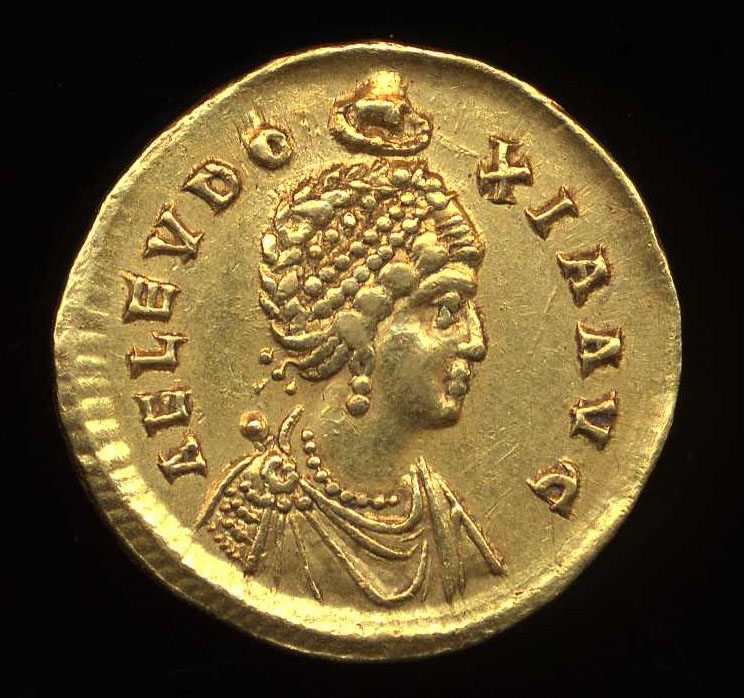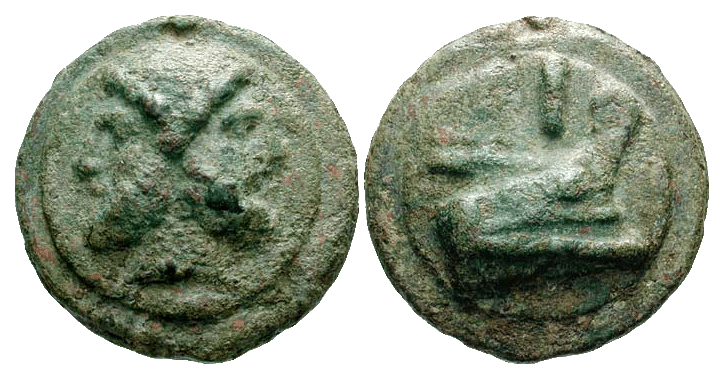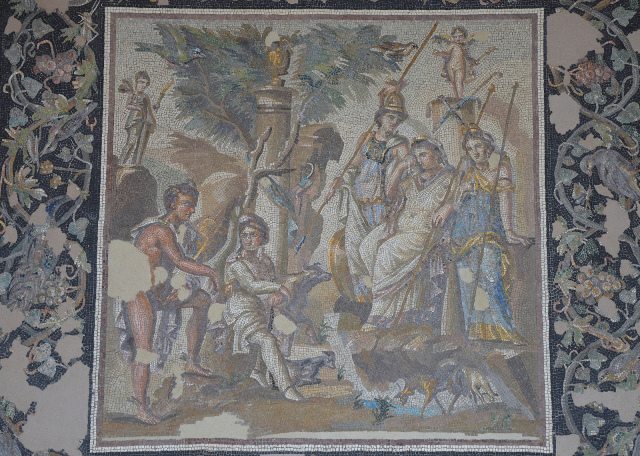Io, Saturnalia!
Happy Saturnalia to all! December 17, marks the beginning of the Saturnalia, a festival held in honour of Saturn that lasted for between 3 and 7 days. It was celebrated in Rome for the first time in 497 BC when the Temple of Saturn in the Roman Forum was dedicated. The poet Catullus called it “the best of days” – Saturnalibus, optimo dierum!. The holiday began with a sacrifice at the Temple of Saturn. After the rituals, the celebrants shouted ‘Io, Saturnalia’ (Macrobius I.10.18). It was followed by several days of feasting and fun. “It is now the month of December, when the greatest part of the city is in a bustle. Loose reins are given to public dissipation; everywhere you may hear the sound of great preparations, as if there were some real difference between the days devoted to Saturn and those for transacting business. … Were you here, I would willingly confer with you as to the plan of our conduct; whether we should eve in our usual way, or, to avoid singularity, …
